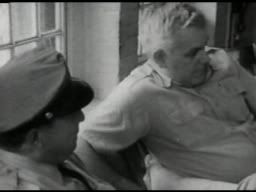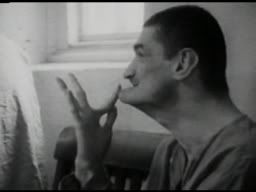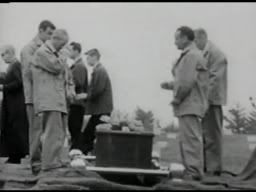Frederick Wiseman, Titicut Follies
Frederick Wiseman's Titicut Follies documents the mistreatment of inmates at the State Prison for the Criminally Insane in Bridgewater, Massachusetts. Made in 1967, its stark and graphic images raised much controversy, causing the documentary to be banned until 1992. I recently had the privilege of viewing Titicut Follies.
Mistreatment of the physically or mentally powerless is nothing new; this message is not the sole import of Titicut Follies. What rises above this story of grim asylum corridors and soulless wardens are the characters, moments in their lives, and our knowledge of their certain grim end. A central objection to his documentary was that Wiseman treats these characters no better than caged animals. The only thing dropping in to visit our ranting and dancing inmates is the inhuman cyclops eye of Wiseman's camera. The camera lingers and lingers, invading sacredly personal space. But behind it lie the hearts and minds of thousands of viewers, decades after the fact and miles from the hellhole that was Bridgewater. Wiseman's documentation is the only way we bridge this gap in time and space today and mourn those mistreated souls that are no longer with us. The horror lies not only in medical mistreatment but also in a profound sense of loss. Bridewater State Hospital still remains in operation today, yet the bathtub water that tastes like champagne is gone forever.
Scenes from the asylum musical show repeat near the beginning and the end of Titicut Follies. By the ending scene we have acquired a new set of eyes. There is nothing to distinguish the inmates and their wardens, just a ship of fools. I felt transported at this point. It was as though we had bid goodbye to the last of the bystanders and were now drifting resolutely down the Titicut.





















Mistreatment of the physically or mentally powerless is nothing new; this message is not the sole import of Titicut Follies. What rises above this story of grim asylum corridors and soulless wardens are the characters, moments in their lives, and our knowledge of their certain grim end. A central objection to his documentary was that Wiseman treats these characters no better than caged animals. The only thing dropping in to visit our ranting and dancing inmates is the inhuman cyclops eye of Wiseman's camera. The camera lingers and lingers, invading sacredly personal space. But behind it lie the hearts and minds of thousands of viewers, decades after the fact and miles from the hellhole that was Bridgewater. Wiseman's documentation is the only way we bridge this gap in time and space today and mourn those mistreated souls that are no longer with us. The horror lies not only in medical mistreatment but also in a profound sense of loss. Bridewater State Hospital still remains in operation today, yet the bathtub water that tastes like champagne is gone forever.
Scenes from the asylum musical show repeat near the beginning and the end of Titicut Follies. By the ending scene we have acquired a new set of eyes. There is nothing to distinguish the inmates and their wardens, just a ship of fools. I felt transported at this point. It was as though we had bid goodbye to the last of the bystanders and were now drifting resolutely down the Titicut.






















0 Comments:
Post a Comment
<< Home